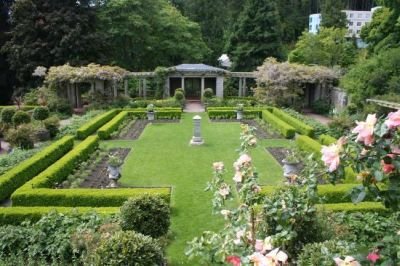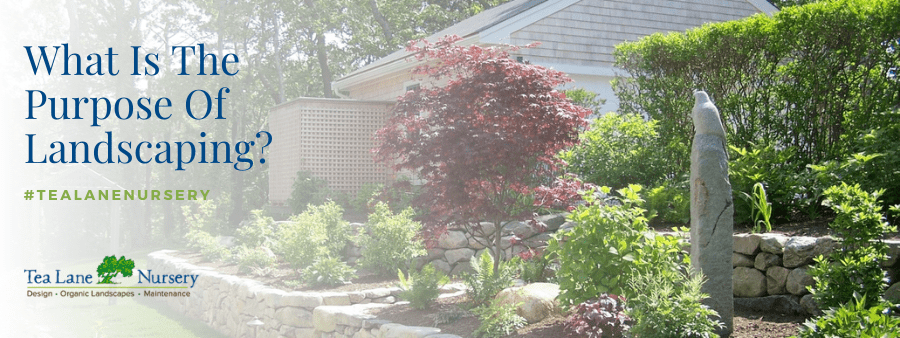Not known Facts About Hilton Head Landscapes
Facts About Hilton Head Landscapes Revealed
Table of ContentsHow Hilton Head Landscapes can Save You Time, Stress, and Money.All about Hilton Head LandscapesThe Definitive Guide for Hilton Head LandscapesThe Basic Principles Of Hilton Head Landscapes Everything about Hilton Head LandscapesNot known Factual Statements About Hilton Head Landscapes Not known Details About Hilton Head Landscapes 5 Simple Techniques For Hilton Head Landscapes
Type compatibility is likewise a major element of unity in designone or two strikingly different forms are excellent for comparison and focus, yet usually all various other kinds need to have some resemblances for a linked appearance. Structure describes exactly how rugged or great the surface area of the plant or hardscape material feels and/or looks.
Instances of plants with crude texture include philodendrons, agaves, bromeliads, hollies, hands, and hydrangeas. Hardscape with coarse texture includes rough-cut rock, rough-finished block, and incomplete wood with knots and an increased grain. Aged or old building product that preserves a weather-beaten surface is typically rugged in structure. Attributes that produce great appearance include small vegetation; slim, strappy leaves (turfs) or tall, thin stems; little, dense branches and little branches; long stems (creeping plants); and little, delicate blossoms.
Our Hilton Head Landscapes Diaries
A lot of plants are moderate texture, in that they can not be explained as having either crude or great texture. They are defined by medium-sized fallen leaves with simple shapes and smooth edges. The average-sized branches are not densely spaced neither extensively spaced, and the overall form is normally rounded or mounding. Medium-textured plants work as a background to link and unify the rugged- and fine-textured plants.

To make a space feel smaller, place the rugged structures along the external boundary and the fine structures closest to the customer. The information of the crude appearance makes the plants show up closer and makes the room really feel smaller sized. The viewed appearance of plants can additionally transform with the range from the plant.
More About Hilton Head Landscapes
Vibrant shades enhance the contrast and make the appearance appear coarser, while muted shades can squash texture. Hardscape with a coarse texturesuch as really rough rocks and bold, huge timberstends to make all plant material appear extra average textured. Developers typically develop an appearance research study (Figure 8) theoretically to assist decide the setup of plant materials.
Color in plant product and hardscape adds rate of interest and range to the landscape. Color is the most noticeable component in the landscape and is normally the emphasis of many home owners; nevertheless, it is additionally the most momentary element, typically lasting just a few weeks a year for private plants.
Top Guidelines Of Hilton Head Landscapes
A basic summary of the shade wheel consists of the 3 primaries of red, blue, and yellow; the 3 second shades (a mix of 2 primaries) of environment-friendly, orange, and violet; and 6 tertiary shades (a mix of one surrounding key and second shade), such as red-orange. Shade concept explains the relationship of colors to every other and exactly how they ought to be utilized in a structure.

Similar (sometimes called harmonious) color pattern are any kind of 3 to 5 shades that are adjacent on the color wheel, such as red, red-orange, orange, yellow-orange, and yellow, or blue, blue-violet, and violet (landscapers in bluffton sc). The colors belong to every other since they usually consist of 2 key shades blended to create a second and 2 tertiary colors, which implies they share typical residential properties
They often tend to have high comparison between them. One of the most usual collections are violet and yellow, red and environment-friendly, and blue and orange. Corresponding colors are typically discovered naturally in flowers; a common set is yellow and violet. Shade is located in the blossoms, vegetation, bark, and fruit of plants.
Not known Details About Hilton Head Landscapes
Eco-friendly foliage in all its different tones is the dominant shade by amount, however other shades capture interest much more conveniently due to their high comparison to the color environment-friendly. Color is additionally found in structures, rocks, pavers, wood, and furnishings. Most shades in all-natural materials, such as rock and wood, are commonly muted and often tend to be variations of brown, tan, and light yellow.
Colors have residential properties that can impact feelings, spatial understanding, light quality, equilibrium, and focus. Trendy shades often tend to be relaxing and need to be made use of in locations for relaxation and calmness.
What Does Hilton Head Landscapes Mean?
Amazing colors have a tendency to recede and are regarded their explanation as being farther away, making an area feel larger. Shade can likewise be made use of to catch focus and direct sights.
Bright yellow, which has the highest possible strength, likewise has a high comparison with all other colors (usually explained as a "pop" of shade) and should be utilized moderately. A small amount of extreme shade has as much visual weight as a big quantity of a more suppressed or weak color.
Comparable (occasionally called unified) color design are any type of 3 to 5 colors that are surrounding on the color wheel, such as red, red-orange, orange, yellow-orange, and yellow, or blue, blue-violet, and violet. The shades are relevant to each other since they commonly include two primaries blended to create a second and two tertiary colors, which implies they share typical properties.
More About Hilton Head Landscapes
Complementary shades are usually located normally in flowers; a common set is yellow and violet. Color is found in the blossoms, vegetation, bark, and fruit of plants.
Green vegetation in all its numerous shades is the leading shade by quantity, yet various other colors record interest much more readily due to their high comparison to the color environment-friendly - hilton head landscapers - https://slides.com/h1tnhdlndscps. Color is likewise found in structures, rocks, pavers, wood, and furnishings. A lot of colors in all-natural products, such as stone and timber, are usually muted and often tend to be variations of brownish, tan, and pale yellow
The 10-Minute Rule for Hilton Head Landscapes
Shades have properties that can affect emotions, spatial perception, light high quality, balance, and focus. Great shades tend to be calming and ought to be utilized in areas for relaxation and tranquility.
The "temperature level" of shades can additionally affect the understanding of range. Cool colors tend to recede and are perceived as being farther away, making a room really feel bigger. Warm colors tend to advance and are perceived as being closer, making a space really feel smaller sized. Shade can likewise be used to capture attention and straight sights.
As an example, bright yellow, which has the highest strength, additionally has a high contrast with all other shades (commonly referred to as a "pop" of color) and ought to be conserved. A little amount of intense shade has as much aesthetic weight as a large quantity of a more subdued or weak color.